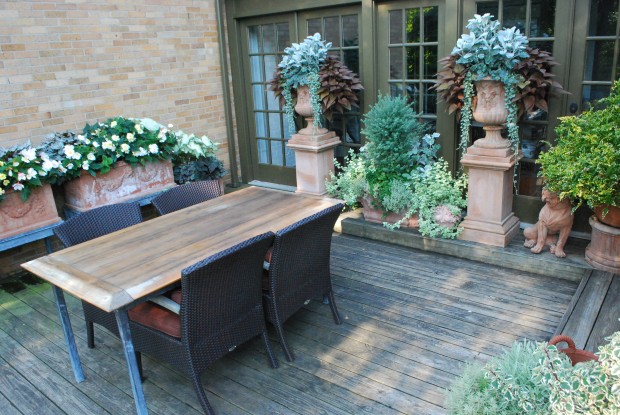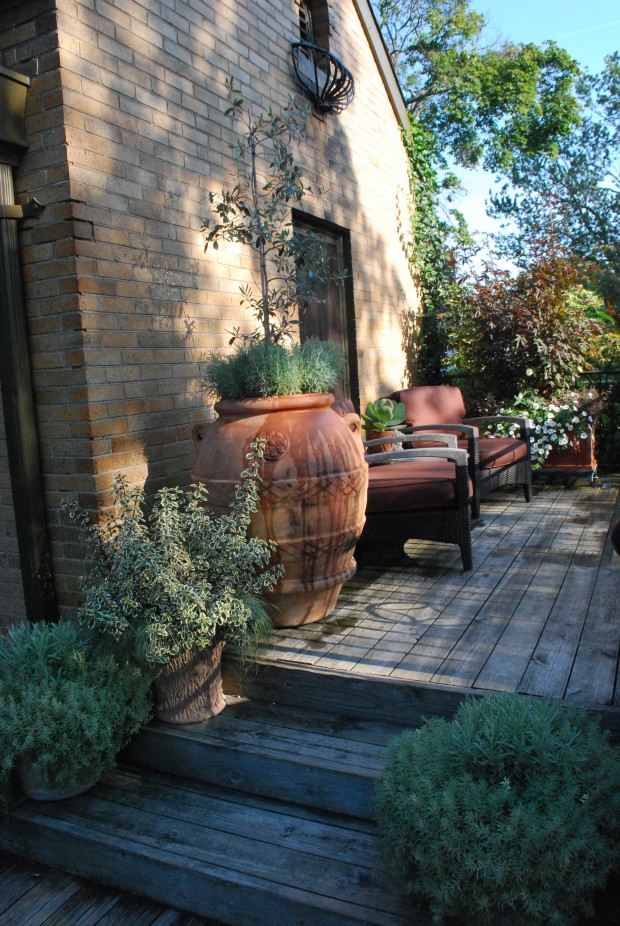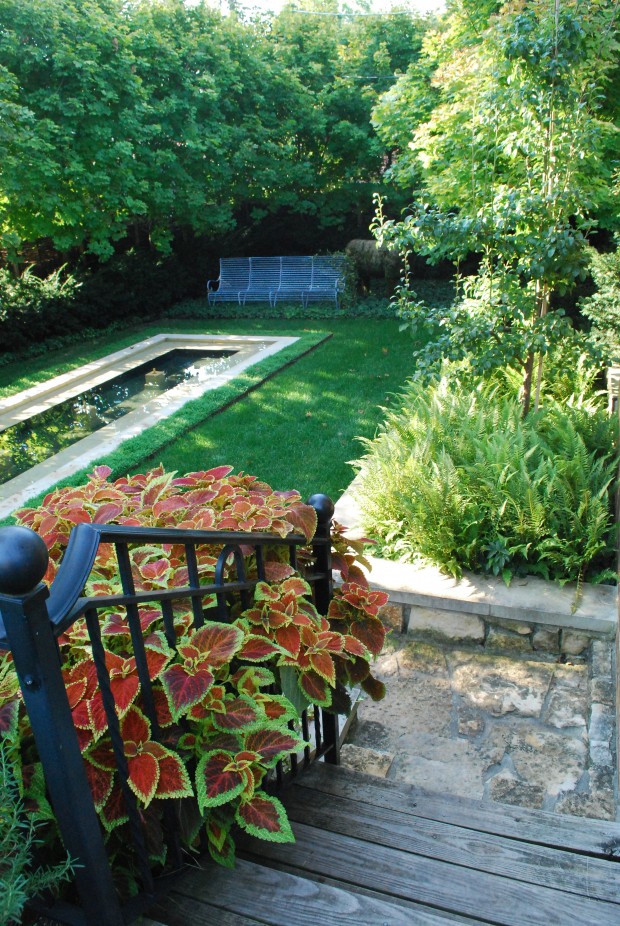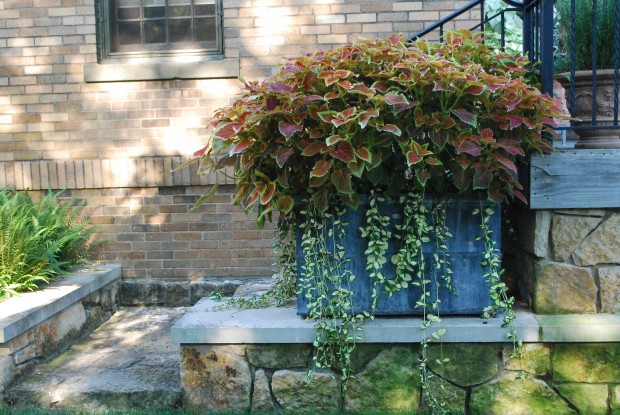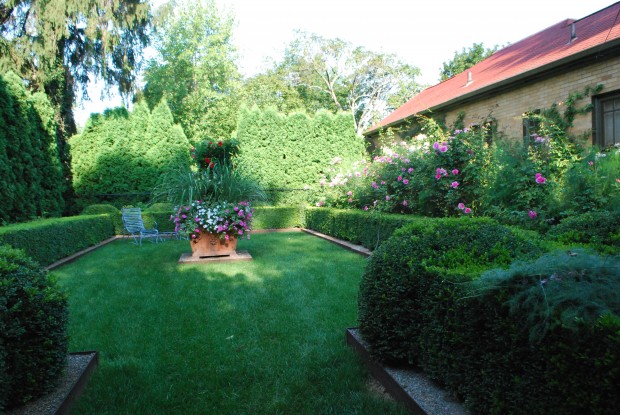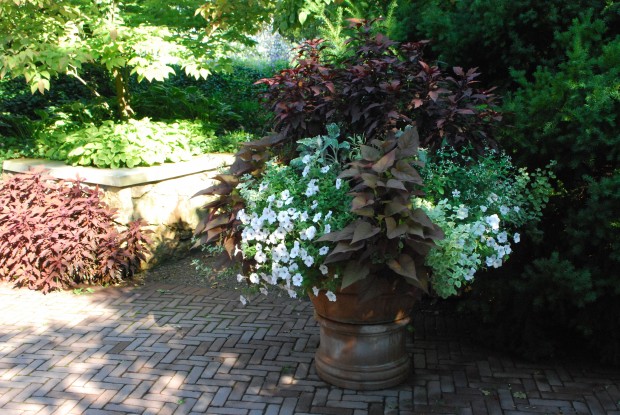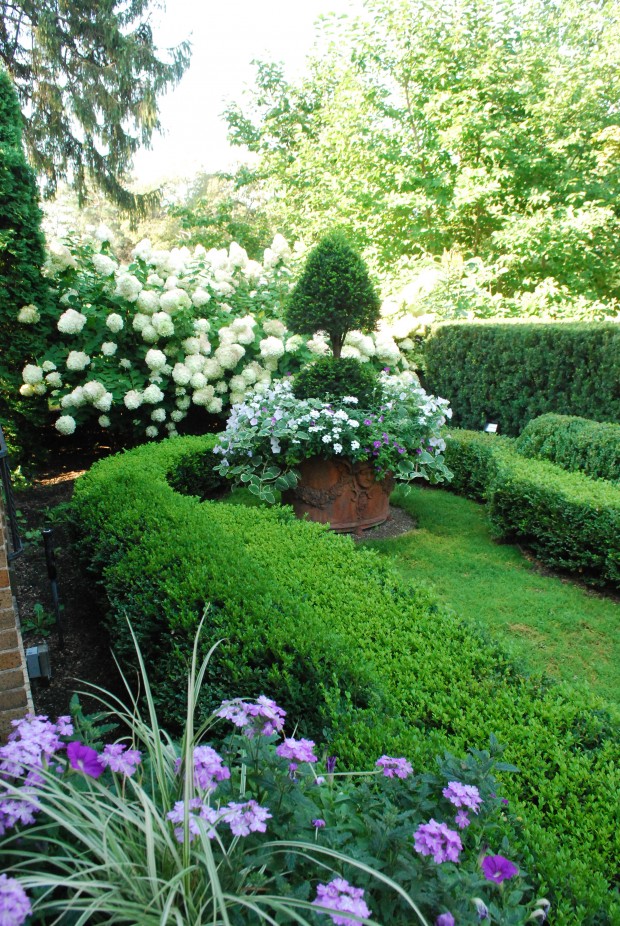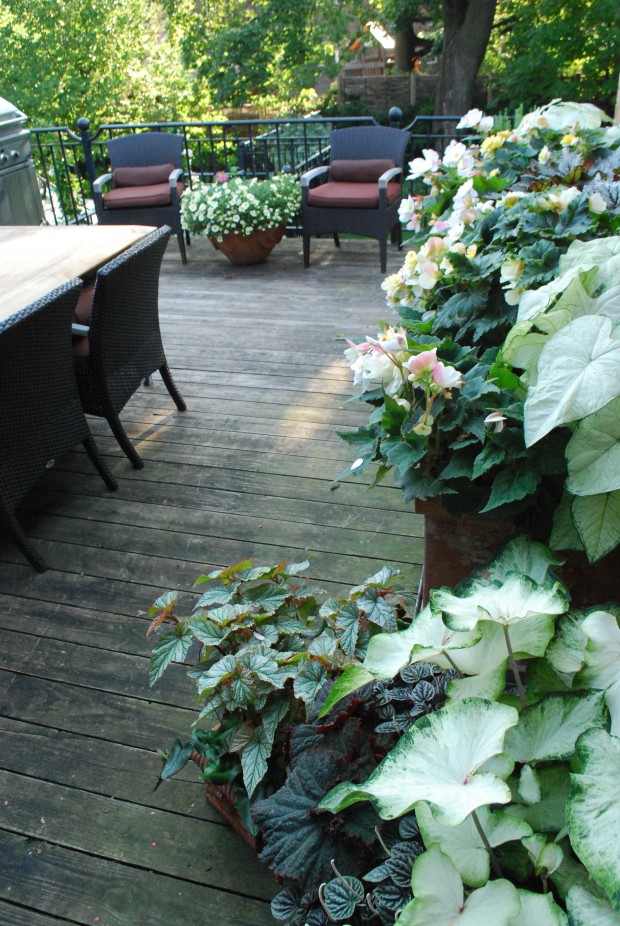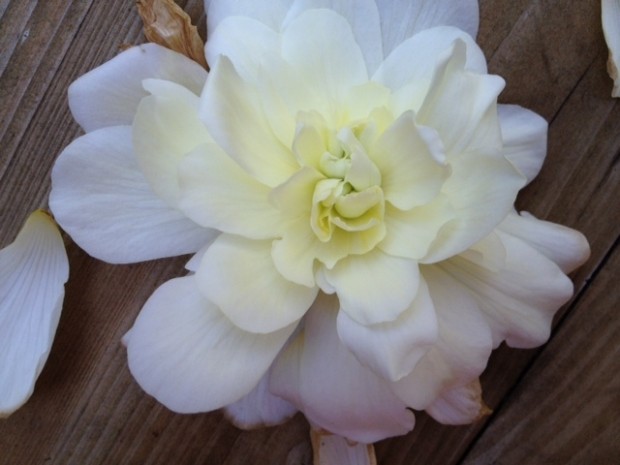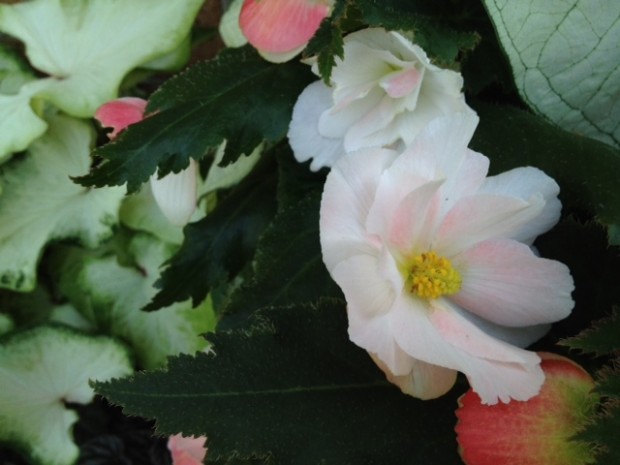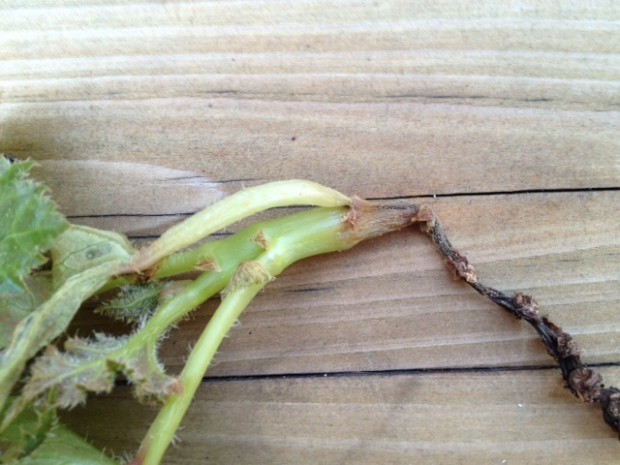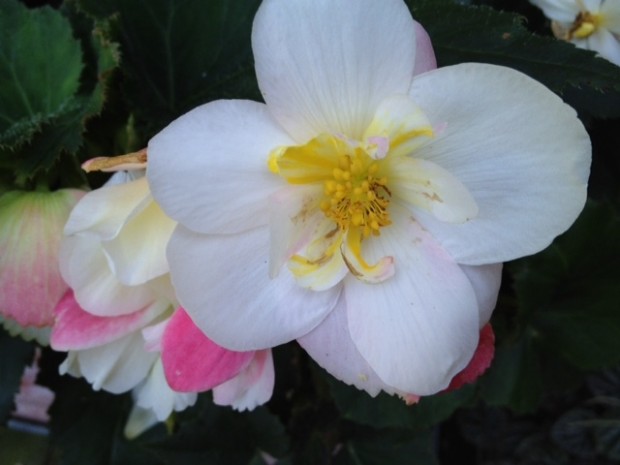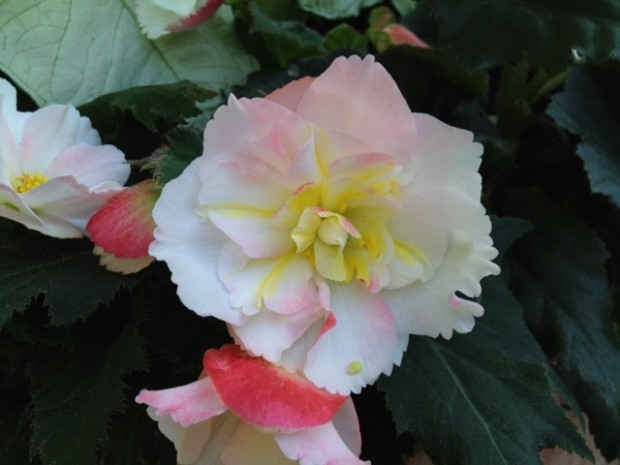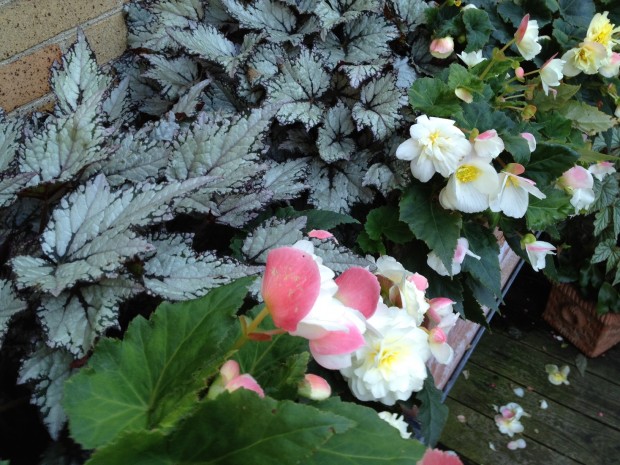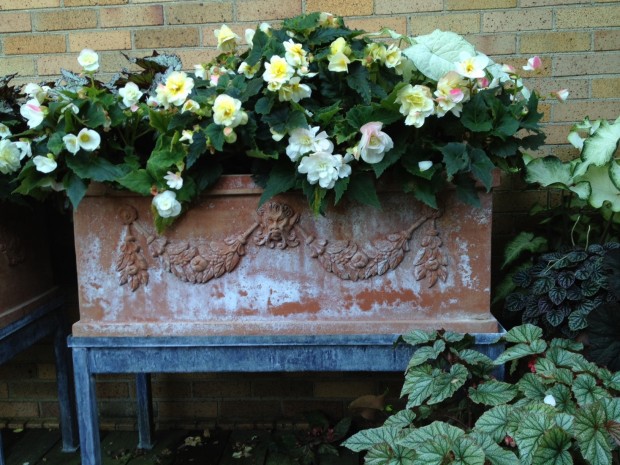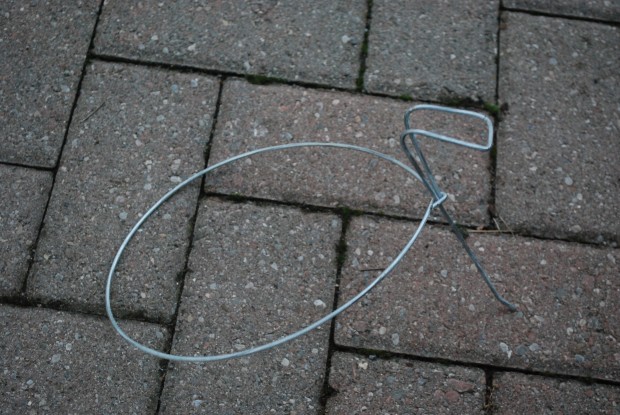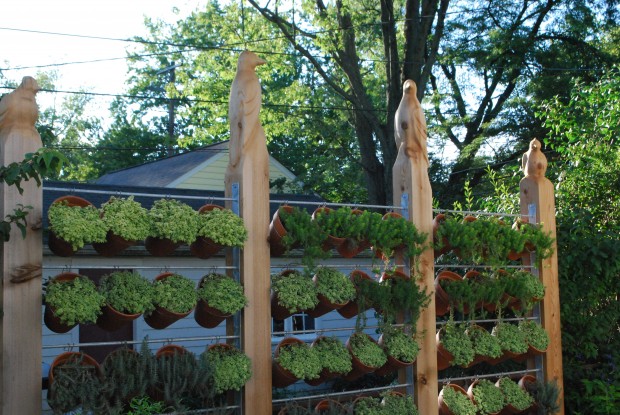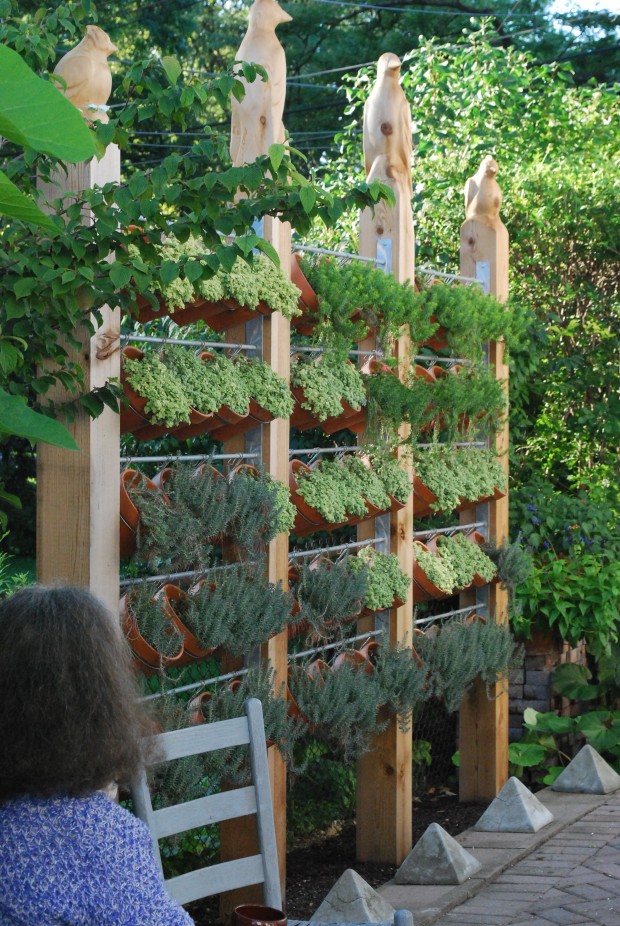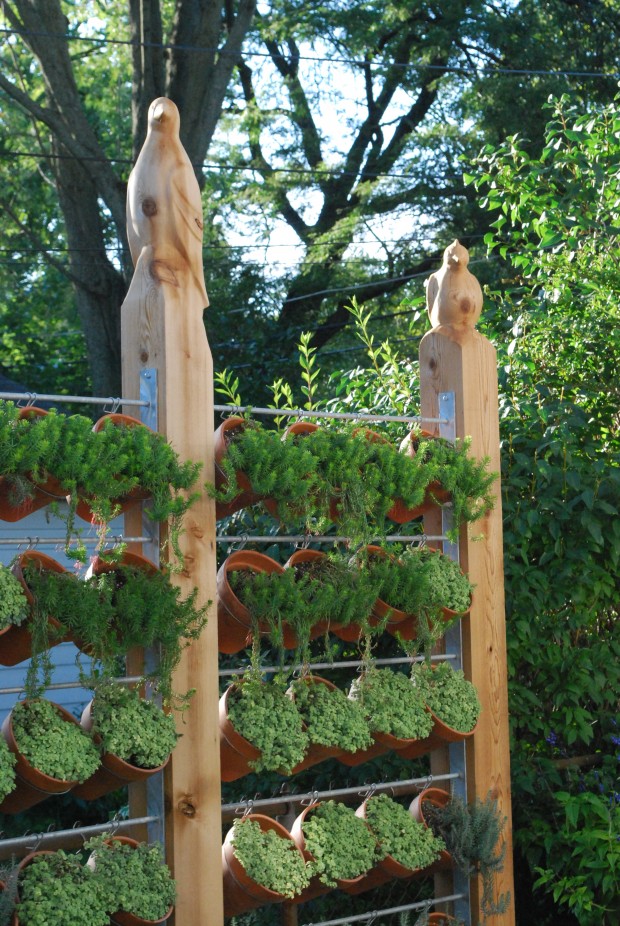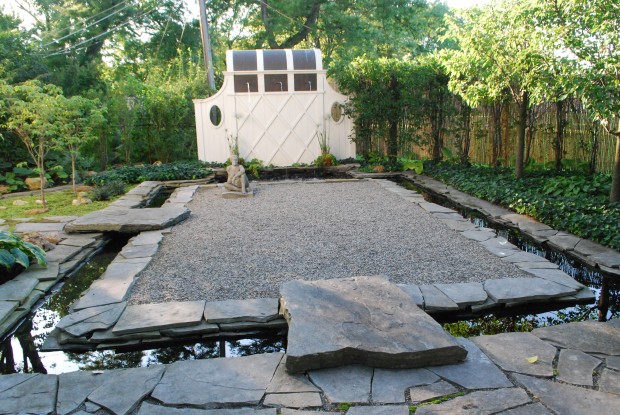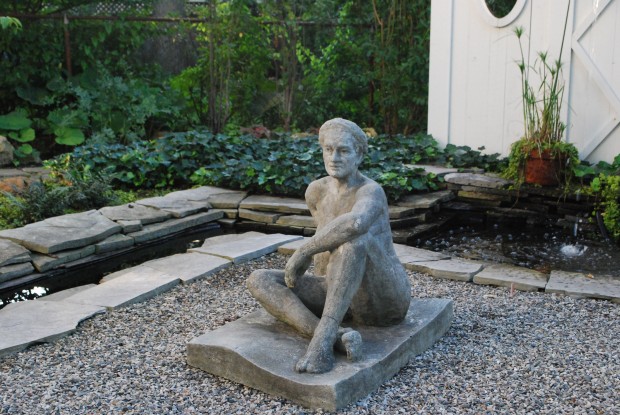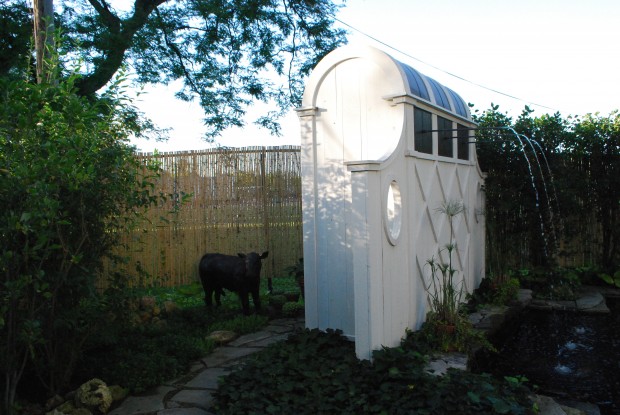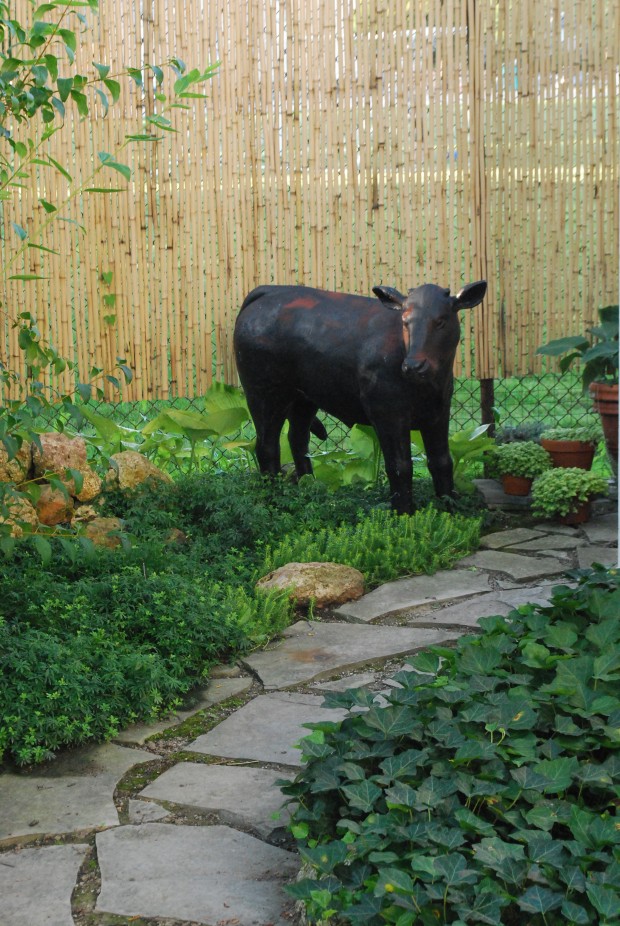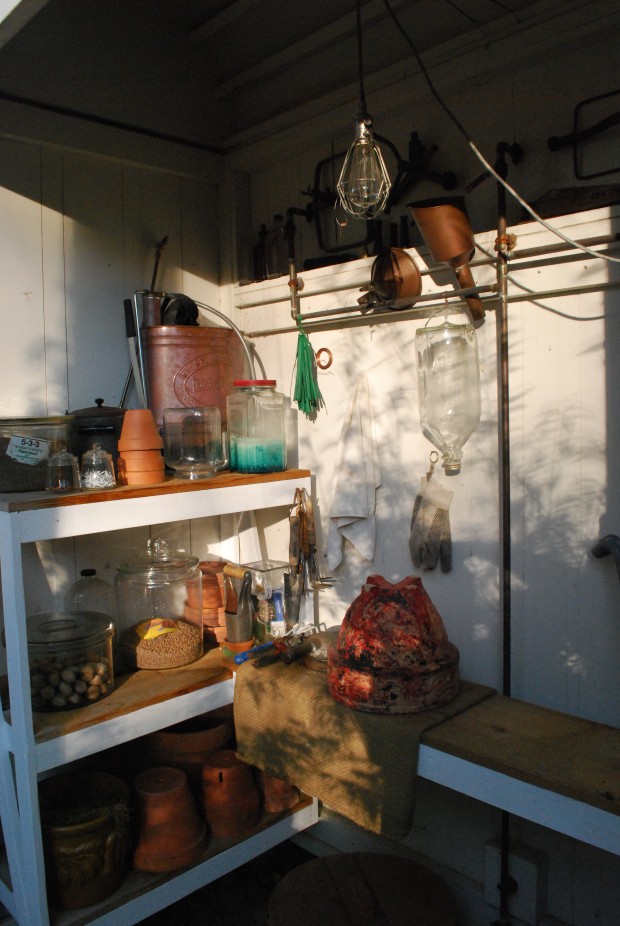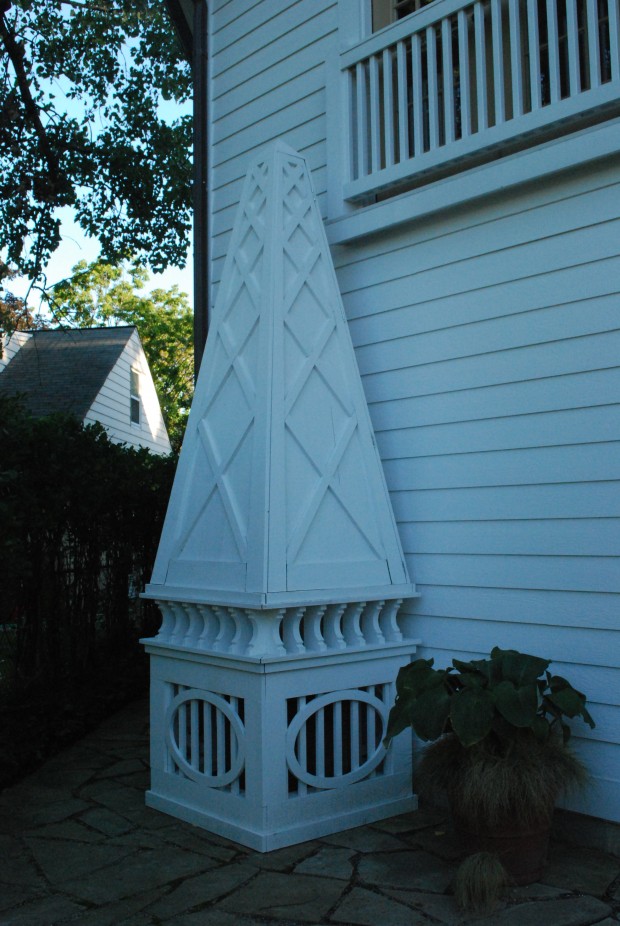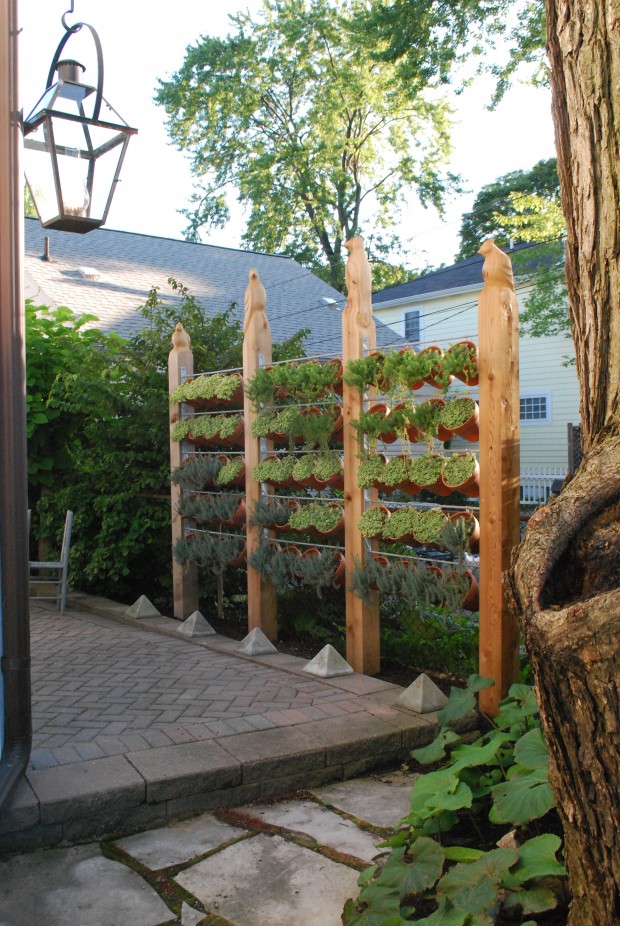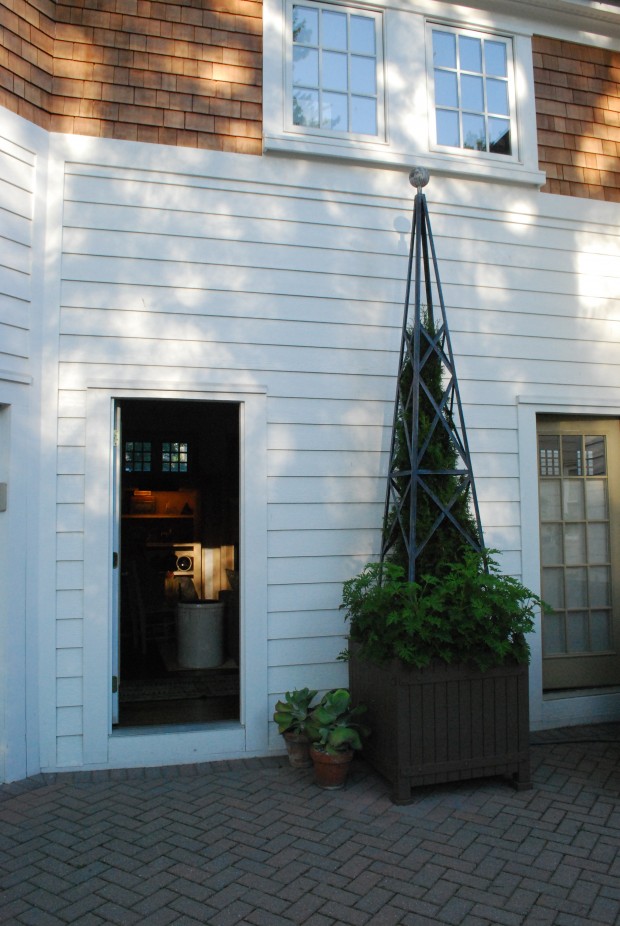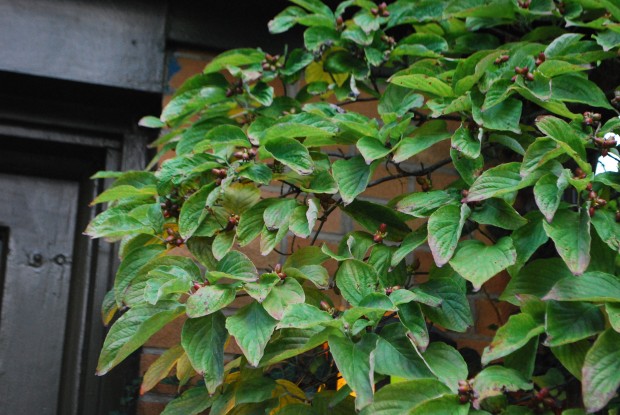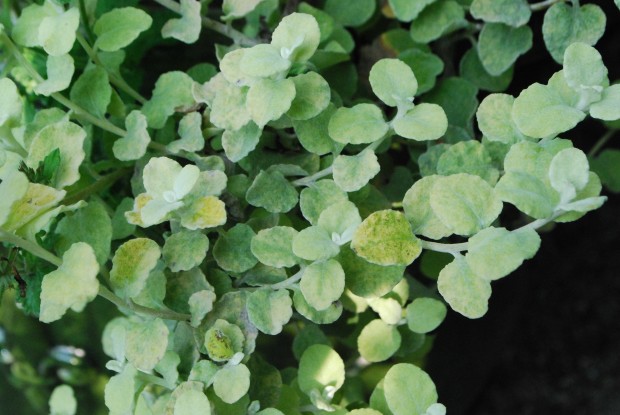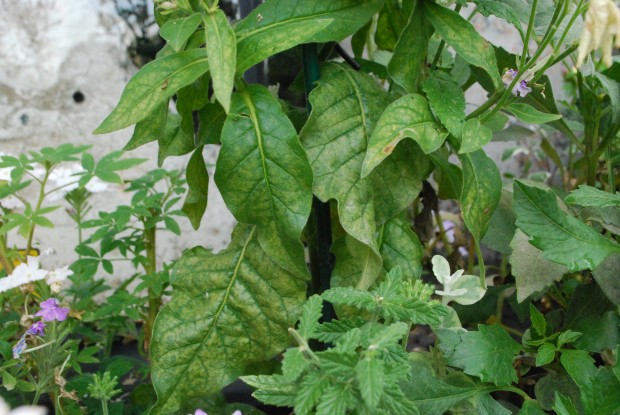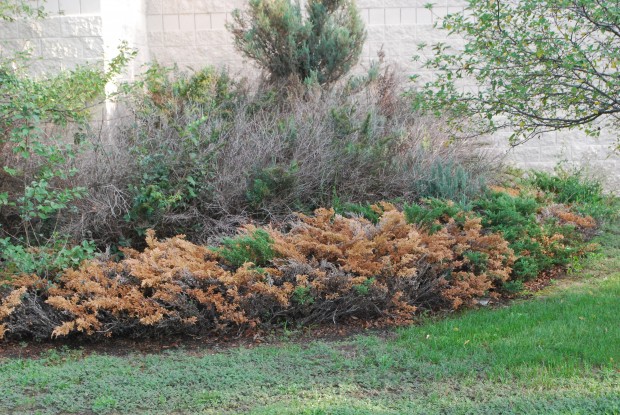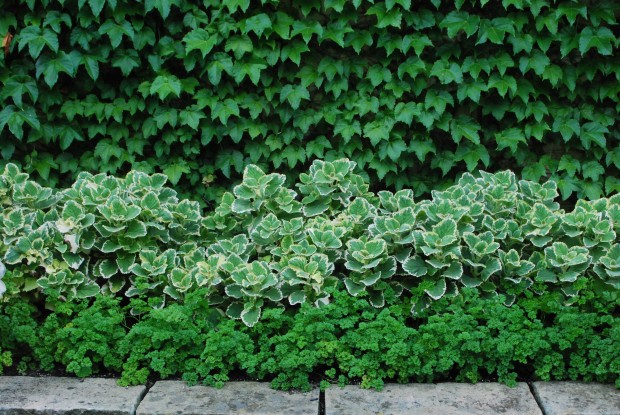The last two weeks have been incredibly busy and demanding. Multiple plans needing tuneups sufficient to submit to planning boards for permit review. A drawing for a fence for permit review. Landscape plans for a new house just about finished. A detailed proposal for a large garden sculpture. Big problems with drainage needing a big plan of attack, and small problems with the garden needing individual and very focused attention. The shop is on the brink of a change of seasons-this means new things coming in needing a place to be.
In the mix-Buck’s 65th birthday. We had friends from out of town. A party for 30 that included dinner. The flowers for those tables and a birthday cake.
My life is no different than anyone else’s. Everyone has much to much to attend to, and a time frame which is short. In the garden, the demands can be endless, and the work hard. It seemed like a good morning to just dawdle.
The morning light was so beautiful. And after all, I did need to water the pots. I dialed all the demands down, and took my time. The Corgis were impatient-they are used to leaving for work at 6am. I ignored them. The morning light, the peace and the quiet, was too beautiful to ignore. The pots have grown so much since May. That subtle color scheme that seemed so sleepy in the beginning has grown on me.
Light can wash over a landscape in a very soft and forgiving way. This Sunday morning was all about what looked good. What managed to be inviting. What seemed fine. I was not about to make a list, and rush to get through it.
The garden is a great place to putter. Meaning that I had no tools, no mission, and no task in mind, other than a little water. I had work to do in the afternoon for a Monday deadline, but that could wait a little while.
I am rarely home in the morning, so this was a treat. The days getting shorter means that soon enough I will be leaving the house in the dark.
I have been watching this pot develop over the past few months. The lemon grass is taking a leading role here. I had no idea it would grow this large, and grow so fast. Several weeks ago its spread was threatening to overwhelm its neighbors-I cut some out. That did not seem to slow it down one bit. It’s time to quit tinkering, and just enjoy the show. It has a very gracefully droopy look that I like.
My roses were terrible in June, and more than terrible in July. Given our cooler August nights and some rain, they have had the idea to grow and bloom some.
The driveway garden gets the lion’s share of my visual attention, given the daily coming and going. Everything looks remarkably happy, given how tough the summer weather has been. Plants are amazingly resilient. They show little sign of what they endured.
Out the front door, all seems well. The boxwood are flushing a second time-this a sure sign of how long we have had hot weather. The hydrangeas are loaded with flowers.
What a beautiful morning.

